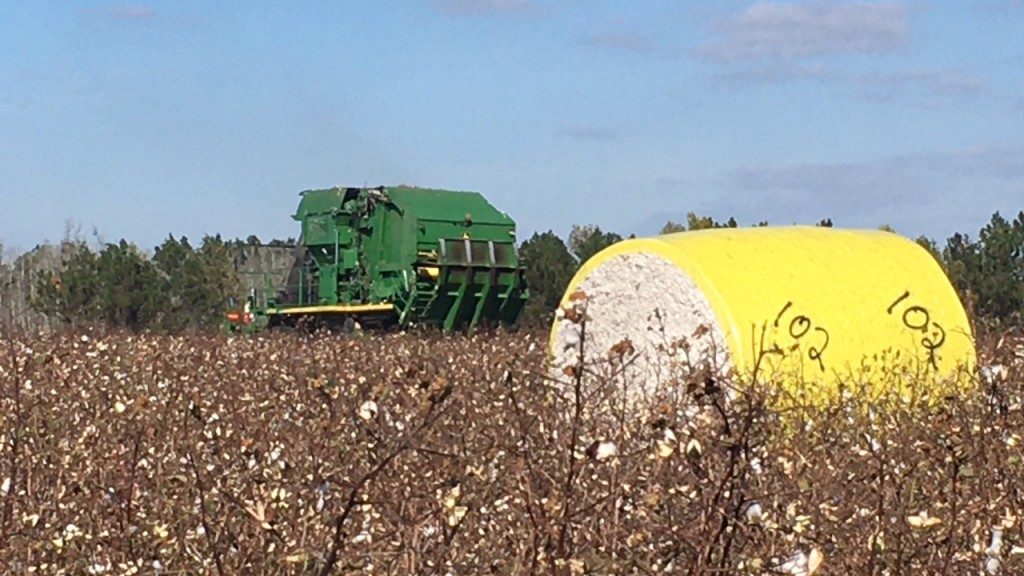Row Crop Disease Update
Below are a few comments from Bob Kemerait on the current disease situation. Reasons for increased attention to disease management issues for our row-crop growers:
- Weather patterns. It has been hot and very dry for most our row-crop producers thus far in the growing season. While warm temperatures do increase the risk to white mold on peanut, the lack of rainfall has pretty much stalled the development of diseases like northern corn leaf blight, peanut leaf spot, target spot on cotton, Asian soybean rust and perhaps even white mold on peanut. HOWEVER, abundant rainfall has fallen over much of the Coastal Plain in recent days and more rainfall is expected.WARM CONDITIONS with increased RAINFALL increase the risk for all of the diseases mentioned above.
- Recommendation: based upon current weather patterns, growers should factor the favorable conditions for disease development into both the timing of their next fungicide spray on any crop (note increased risk) and perhaps also the fungicide they may use. For example, growers who have considered use of only inexpensive tebuconazole until now may want to consider is there any benefit to switching to a more aggressive fungicide.
- Growth stages of the crops. The growth stage and development of a crop can have a huge impact on the susceptibility of the crop to disease and also the level of urgency for protecting the crop. Suffice it to say that our peanut and soybean crops (both in reproductive growth stages) and our cotton crop are all at stages where disease management is an important consideration.
- Peanuts: now is the time to be protecting against leaf spot diseases and also soilborne diseases like white mold (hot and now wet conditions are textbook-perfect for this disease), Rhizoctonia limb rot (this disease has been fairly common this year, recently reported in Webster and Cook Counties) and leaf spot (both early and late are in peanuts now but, have been slowed by dry weather).
- Soybeans: Asian soybean rust has NOT been found in Georgia yet; however it has been found in Florida counties bordering on Georgia and it is now beginning to move into central Alabama. For note: given the growth of the soybean crop, recent and predicted rain events and also development of soybean rust in neighboring states, growers should consider the use of a fungicide program.
- Cotton: Hot and dry weather has SIGNIFICANTLY slowed the development and spread of target spot this year.However scattered reports of target spot have been confirmed and the disease is well established in plots at Stripling Irrigation Research Park. Recommendation: Scout cotton, especially heavy-growth cotton, and consider the use of fungicides for cotton with rank growth and early detection of the disease. We have had success in managing target spot with fungicides are applied through the 6th week of bloom.
Peanut Water Requirements for August.
https://site.extension.uga.edu/colquittag/2014/08/water-requirements-for-peanuts-in-august/
How Do I Irrigate My Soybeans?
https://site.extension.uga.edu/colquittag/2014/08/how-do-i-irrigate-my-soybeans/
Fall Armyworms
I have been getting reports of fall armyworms in pastures and hay fields in Colquitt County for a couple of weeks. Keep an eye out for them by scouting your fields. Treat when larval populations of fall armyworms exceed 3 larvae (1/2 in. long or larger) per square foot. For insecticide options, review the pesticide options listed here.
Bermudagrass Stem Maggot
Questions about bermudagrass stem maggot (BSM) has been the top topic from Colquitt County forage producers for the last month. A large number of Colquitt County bermudagrass hay fields have been treated for BSM, especially the finer stem bermudagrass varieties such as Alicia.
Below are a few words from Dr. Dennis Handcock on the current situation. Treatable numbers of bermudagrass stem maggot are being reported in several locations across the southern 2/3 of the state. Many producers have recently cut their hayfields during this week of good weather. If you are in the southern 2/3 of the state AND you had visible damage in the cutting that was cut earlier this week, you should consider applying a recommended rate of an inexpensive pyrethroid insecticide 7-10 days after the crop was cut. If pressure remains high in your surrounding area (e.g., neighboring fields are cutting, encouraging the flies to migrate to your field), a second application should be made 7-10 days later to suppress any flies that have emerged or arrived since the last application. Chemical actions should only be taken if the expense of the application(s) (usually less than $15/acre for both applications) is justified by the forage yield saved. More information about this subject can be found in this article.
August is an important month for Pecans!!
Below is information from Dr. Lenny Wells, UGA Pecan Specialist, on the current pecan situation.
https://site.extension.uga.edu/pecan/2014/08/august-is-the-most-critical-month-for-pecans/
Thank you for your time,
Jeremy Kichler
County Extension Coordinator
Colquitt County
